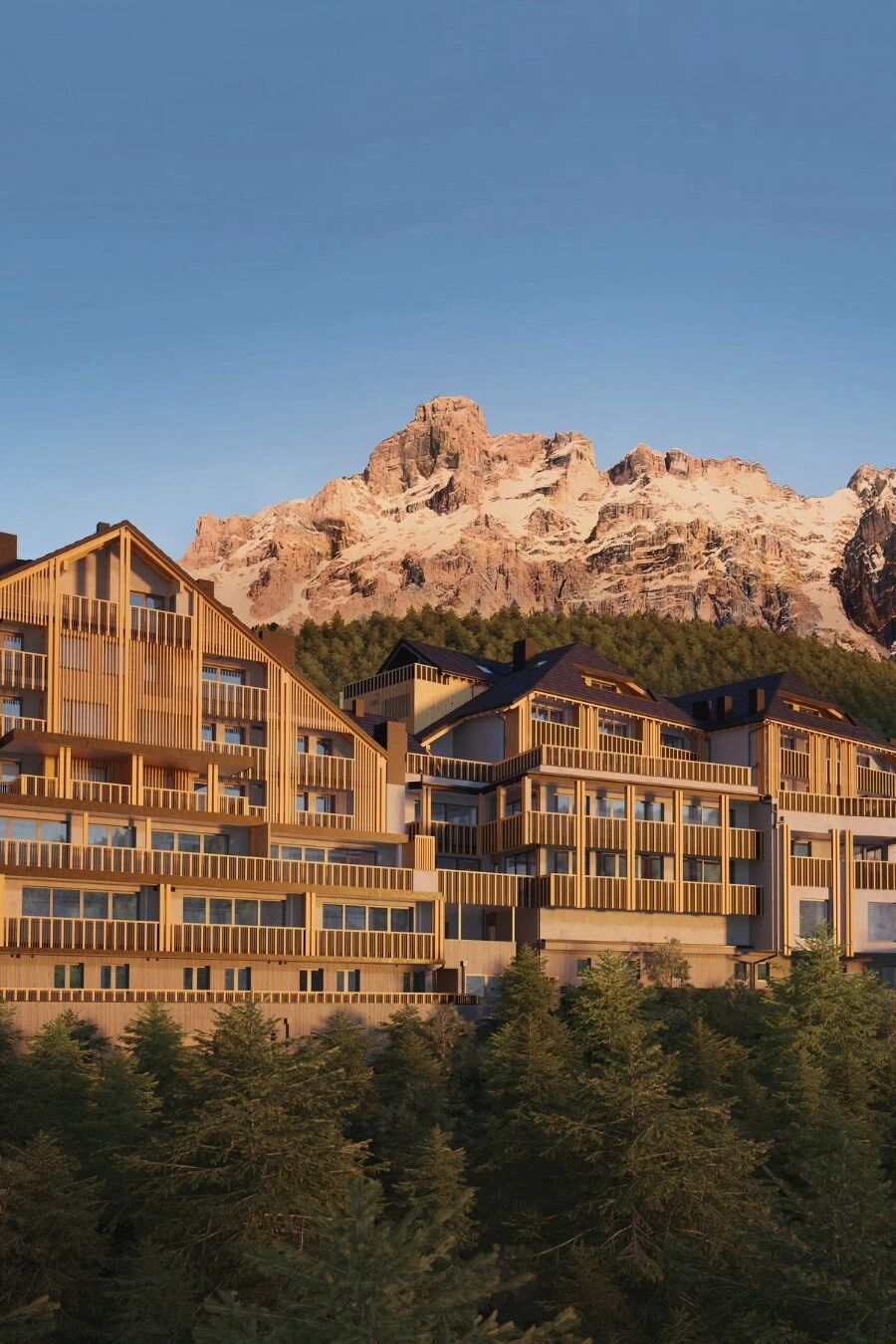Sleeve House – Vacation Home in a Rural Area of the Hudson Valley
2018-08-27 13:05
Architects: actual / office Project: Sleeve House Project Team: Adam Dayem, Farzam Yazdanseta Location: Taghkanic, New York, United States Area 2500.0 ft2 Project Year 2017 Photographer: Michael Moran
建筑师:实际/办公室项目:袖屋项目小组:Adam Dayem,Farzam Yazdanseta地点:纽约塔赫卡尼奇,美国2500.0英尺2工程年摄影师:迈克尔·莫兰
Oriented in relation to the rolling hills of its site and views of surrounding mountain ranges, the Sleeve house is conceived as two elongated volumes – a smaller one sleeved into a larger – sitting on a cast-in-place concrete base. Sleeving the two volumes creates two distinct types of interior space: first, between the inner and outer volumes, and second within the inner volume.
与其场地的起伏山丘和周围山脉的景色相比,袖式房屋被设想成两个细长的体积-一个较小的卷,装成一个更大的-坐在一个浇铸的混凝土基座上。套管两卷创造了两种不同类型的内部空间:第一,内部和外部卷之间,第二在内部卷。
More public spaces of the domestic sphere are in between the inner and outer volumes; they are the spaces remaining in the outer volume after the inner has been inserted into it. They include a dramatic entry gallery, a narrow vertical slot for the stairs, and a high ceilinged living space with a sloping wall of glass. These spaces are on a grand scale and they are finished with exposed concrete and charred wood, which run continuously in from the exterior. The interior of the inner volume contains private spaces of the house – bedrooms, bathroom and a study. These spaces are on an intimate scale with more typical domestic finishes. The experience of moving between these two types of spaces is like moving between two different worlds.
家庭空间中有更多的公共空间位于内部和外部空间之间,它们是在内部插入之后仍保留在外部空间中的空间。他们包括一个戏剧性的进入画廊,一个狭窄的垂直的楼梯槽,和一个高天花板的生活空间与倾斜的玻璃墙。这些空间具有很大的规模,它们是由暴露的混凝土和烧焦的木材完成的,这些木材从外部不断地运行。内卷的内部包含房子的私人空间-卧室、浴室和书房。这些空间是在一个亲密的规模与更典型的家庭装修。在这两种类型的空间之间移动的经验就像在两个不同的世界之间移动一样。
Both the inner and outer volumes are wrapped around their tops, bottoms, and long sides with a charred wood skin. The charring is a traditional Japanese process that leaves wood blackened and highly resistant to weather and rot. Boards of varying thickness and depth are placed flat and on-end to give the facades depth, pattern, and texture. The on-end boards run continuously as screens over windows on the long sides of the house to emphasize purity of the sleeved volumes and reference the volumetric simplicity of historical barns, silos and old other agricultural buildings in the region.
内外卷都用烧焦的木皮包裹在顶部、底部和长边。炭化是一种传统的日本工艺,使木材变黑,对天气和腐烂有很强的抵抗力。不同厚度和深度的板被放置在平面和端部,以赋予正面的深度、图案和纹理。端板作为屏幕连续运行在窗户上的长边的房子,以强调纯正的袖卷,并参考体积的体积简单的历史谷仓,筒仓和旧的其他农业建筑在该地区。
The site is located in a rural area of the Hudson Valley approximately two hours north of New York City and near several fast-developing Hudson Valley cultural centers including the towns of Hudson, Rhinebeck, and Millerton. Sleeve house is designed as a weekend and vacation home for art-collecting urban dwellers with a love of Hudson Valley landscapes. Large expanses of glass frame views of the Catskill and Taconic mountain ranges. Large interior walls and concrete pedestals support the installation and display of various types of artwork. The project strives to create a striking appearance on the landscape and unique spatial experiences for its inhabitants, while at the same time providing comfortable, livable domestic spaces.
该遗址位于哈德逊谷的一个农村地区,距离纽约市大约两小时车程,靠近几个快速发展的哈德逊谷文化中心,包括哈德逊、莱茵贝克和米勒顿等城镇。袖式住宅是为热爱哈德逊山谷景观的收集艺术的城市居民设计的周末度假别墅。卡茨基尔山脉和塔科尼山脉的大面积玻璃框架景观。大型内墙和混凝土底座支持安装和展示各种类型的艺术品。该项目力求为其居民创造一个引人注目的景观外观和独特的空间体验,同时提供舒适、宜居的家庭空间。
The Sleeve house is built to be as energy efficient as possible given the amount of glass in the design and, as a development project, the need to control up-front costs. Energy efficient aspects of the project include enough solar collection to power all electrical needs, a battery back-up for the solar power system, triple glazed windows, spray foam insulation and envelope detailing to reduce air infiltration to nearly zero, radiant heating in the massive concrete base of the building to effectively retain heat, and a heat and energy recovery ventilation system.
在设计中考虑到玻璃的数量,并且作为一个开发项目,需要控制前期成本,因此建造套筒房是为了尽可能节省能源。该项目的节能方面包括:为所有电力需求提供充足的太阳能收集、太阳能动力系统的电池后备、三层玻璃窗、喷雾泡沫绝缘和封装细节,将空气渗透减少到几乎为零;在建筑物的大体积混凝土基础上进行辐射加热,以有效地保持热量;以及热和能量回收通风系统。
 举报
举报
别默默的看了,快登录帮我评论一下吧!:)
注册
登录
更多评论
相关文章
-

描边风设计中,最容易犯的8种问题分析
2018年走过了四分之一,LOGO设计趋势也清晰了LOGO设计
-

描边风设计中,最容易犯的8种问题分析
2018年走过了四分之一,LOGO设计趋势也清晰了LOGO设计
-

描边风设计中,最容易犯的8种问题分析
2018年走过了四分之一,LOGO设计趋势也清晰了LOGO设计






















































